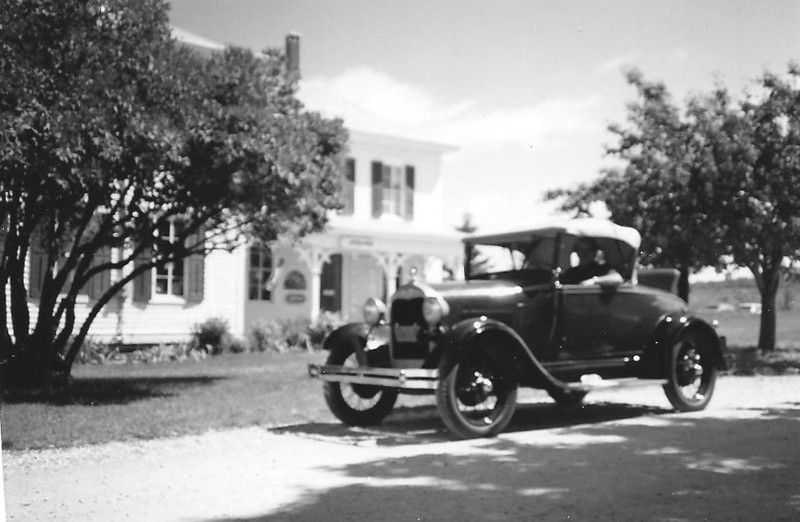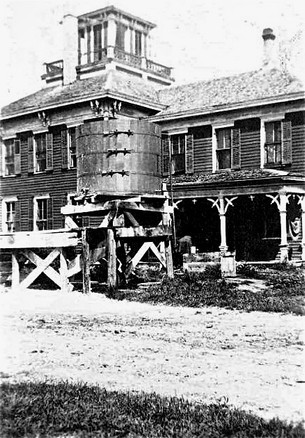The Cupola House
Introduction
Text-to-speech Audio
Images
Egg Harbor 1871 Cupola House

Egg Harbor Cupola House with vintage automobile

Cupola House with water tank


Backstory and Context
Text-to-speech Audio
What’s a cupola?
At its most basic level, a cupola is “a small dome or structure adorning a roof or ceiling.” Often, these constructions showed status.
However, Levi Thorp was not interested in constructing just any run-of-the-mill cupola. He ensured that the one atop his home included a widow’s walk as well.
What’s a widow’s walk?
A widow’s walk is a railed or balustrated platform built on a roof, which were very popular in Early new England houses. Widow’s walks were typically used to provide an unimpaired view of a large body of water.
Levi thorp was a sailor himself. He would often stroll his widow’s walk and gaze out on the water, searching for storm clouds or ships in need of assistance. The widow’s walk at the cupola house was in use well into the 20th century and remains in place to this day.
Building Backstory:
This house was built by Levi Thorp, one of the earliest settlers in the Egg Harbor area, and reflects the position this early merchant had in the county.
Egg harbor in the mid-1800s was desolate. Settlers were greeted with thick hardwood forests, often with little more than a dirt path to navigate the terrain. This meant that those who survived in the seclusion of the upper Door peninsula had to be tough and adventurous.
Fortunately, Levi Thorp and his brothers were just the tenacious and hard-working pioneers Egg Harbor needed.
Levi made money in the California gold rush of 1849, and quickly bought 1,600 acres in Egg Harbor in order to harvest and sell the area’s abundant timber. This house was paid for with gold dust he brought from California in a chamois money belt after the gold rush . He was particularly careful in the selection of wood for his new home and found knots unacceptable and, as renovation has revealed, he was most successful in avoiding them. In 1871 the cupola house was completed, using both the virgin timber from the area and money Levi had saved while prospecting.
The cupola house quickly gained a reputation as the nicest home in Egg harbor, and was established as a popular gathering place for many in the community. Lavish parties were held within its walls, and Levi used it as a base to conduct his business operations.
The floors are white pine brought across the frozen waters of Green Bay from Menominee with the other lumber needed for this beautiful project. A staircase rises through the center of the house and is graced by banister and newel post of butternut.
The central hall surrounding this staircase has fine examples of early wallpaper and wood grain painted woodwork and doors. This house is, and will remain, an exquisite example of early Wisconsin design and craftsmanship. The renovation and preservation of this historic house was supervised by its new owners, Richard and Gloria Hansen.
Though the home has changed owners multiple times and has experienced many physical transformations, it remains a beacon of Egg Harbor history and culture, and continues to offer interesting stories and experiences for current visitors.
